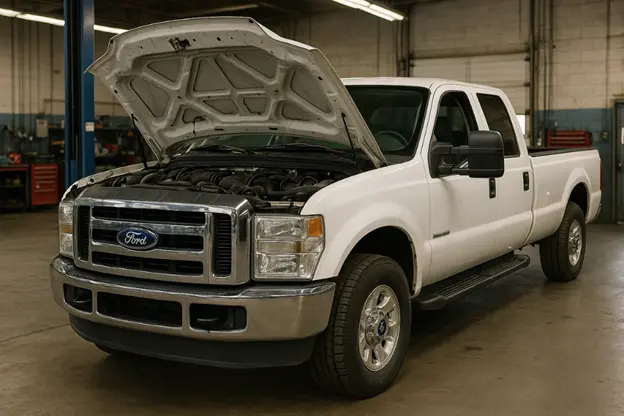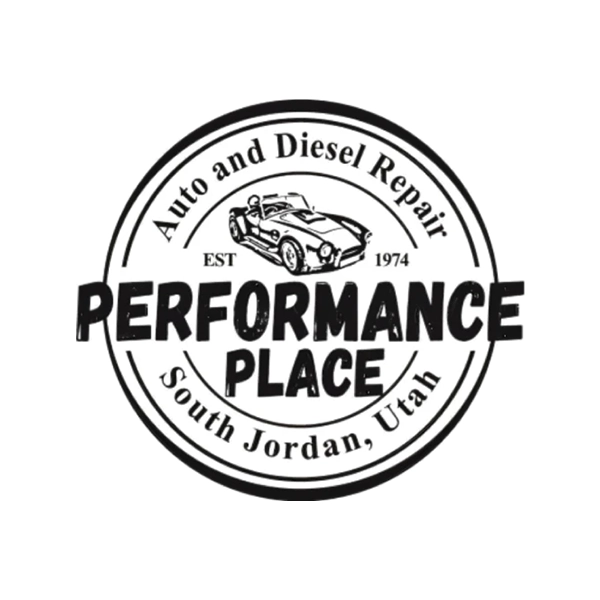They may be iconic, but even trusted diesel engines like the 1st Gen Cummins, 3.0 Duramax, and 6.4 Powerstroke come with their own set of quirks, and when those quirks are ignored, they can turn into wallet-draining repair jobs. From hidden mechanical flaws to wear-and-tear patterns that only show up with time, these engines are known for surprising even seasoned owners.
The good news? Most of these problems offer early warning signs if you know what to look for. Before a minor issue sidelines your truck or stalls your next trip, learn the common failure points and how you can stay ahead with proactive maintenance and expert insight from the team at Performance Place.
Understanding the Power and Pitfalls of These Diesel Icons
Each of these engines has its fanbase, reputation, and reason for being on the road for years. But under the hood? Each comes with unique mechanical quirks that could cost thousands if left unchecked.
Let’s break down what you need to know.
The 1st Gen Dodge Cummins: Built to Last, Until It Doesn’t
Why Owners Love It
The 1st Gen Cummins (1989–1993) helped redefine diesel pickups. Its mechanical simplicity and legendary 5.9L inline-six diesel engine made it the gold standard of reliability. No fancy electronics, no fuss. Just raw torque.
But time is catching up.
Common 1st Gen Dodge Cummins Issues
- Killer Dowel Pin (KDP): It’s a notorious issue—a small steel pin can vibrate loose and wreak havoc on internal engine components. Preventative fixes are available but often overlooked.
- Fuel Lift Pump Failure: A weak lift pump can lead to injector problems or poor starting, especially in colder climates.
- Transmission Weakness: Especially in automatic models, these weren’t built to handle the torque these engines produce.
- Rust and Frame Rot: Age and exposure have taken a toll on many of these classics, particularly in snow-prone areas.
Quick Tip: If your Cummins is approaching or is over 150,000 miles and hasn’t had the KDP addressed, now’s the time.
3.0 Duramax: Quiet Power, But Not Without Its Headaches
A Modern Marvel
The 3.0L Duramax diesel, available in newer GM pickups, delivers impressive torque, quiet operation, and great fuel economy. But its advanced design can also lead to difficult and expensive repairs.
3.0 Duramax Problems to Watch For
- Timing Chain Tensioner Issues: Tucked at the rear of the engine, replacing this part requires transmission removal, making what should be routine maintenance a serious labor job.
- EGR and Intake Carbon Buildup: Common in trucks with lots of short trips, this buildup can cause reduced power and fuel efficiency.
- Oil Pump Belt Access: Another item hidden behind the transmission, requiring specialty tools and expertise to service.
- Sensor Failures and Electrical Glitches: Advanced emissions systems come with an array of sensors. When they fail, they can cause phantom codes or erratic behavior.
If you notice sluggish starts, check engine lights or inconsistent performance, it’s best to get ahead of it before parts wear out or damage spreads.
6.4 Powerstroke: Strong and Capable, But Prone to Costly Problems
When Ford Aimed for High Performance
The 6.4L Powerstroke (2008–2010) came equipped with twin turbos and lots of promise—but it’s become infamous for its maintenance costs.
Top 6.4 Powerstroke Engine Repair Concerns
- EGR and DPF Failures: Frequent regen cycles and clogging are common, leading to poor fuel mileage and power loss.
- Coolant Leaks: These often come from the EGR cooler or oil cooler, which can fail without much warning.
- Fuel in Oil (Fuel Dilution): A dangerous issue where fuel leaks into the oil system, potentially ruining engine bearings and reducing overall life.
- Turbocharger Problems: Heat and soot buildup can cause performance loss or even complete failure.
These issues are compounded by the engine’s cramped layout, which makes even minor repairs labor-intensive.
What Sneaks Past Most Diesel Owners
Not every diesel repair starts with a blown turbo. Often, it’s the small, overlooked issues that lead to downtime and costly repairs. Here are some to keep an eye on:
- Old or Overlooked Fluids: Coolant, transmission, and differential fluids break down over time. Skipping these can cause internal corrosion, overheating, or shifting issues.
- Weak Batteries & Charging Systems: Slow starts could mean failing glow plugs, a dying battery, or alternator problems—all of which impact cold starts and overall drivability.
- Worn Mounts & Suspension Components: Rough roads and heavy loads wear out engine mounts, bushings, and shocks. These issues cause vibration and reduce ride quality, and can mimic more expensive drivetrain problems.
- Restricted Airflow: Clogged air filters or carbon buildup in the intake system cut engine performance and fuel economy. It’s a subtle drop you might not notice right away.
- The Real Expense Is Downtime: It’s not just the repair cost, it’s the missed workday, the delayed trip, or the time spent waiting for parts that hit the hardest.
Tip: A full-vehicle inspection once or twice a year can catch these small problems early before they become big ones.
Diesel Repair Isn’t One-Size-Fits-All—Especially in Utah
Diesel engines aren’t just larger versions of gas engines—they’re entirely different machines. They run under extreme pressure, rely on advanced fuel systems, and use emissions components like DPFs and EGRs that require expert handling. Generic repair shops often miss key details or misdiagnose issues, simply because they lack the tools or training to work on diesel platforms.
Here in South Jordan and throughout Utah’s South Valley, diesel trucks work hard. Whether you’re towing equipment through canyons, running job-site fleets, or hauling the family camper, your truck faces challenges like elevation changes, extreme weather swings, long highway commutes, and freezing starts.
That’s why it’s essential to work with a shop that understands diesel performance in Utah specifically, a team that knows how local conditions impact diesel systems and has the OEM diagnostics, hands-on expertise, and practical insight to keep your truck running right.
From the Valley, For the Valley: Diesel Service You Can Count On
Diesel trucks in our part of Utah aren’t just for show, they’re tools, workhorses, and part of the family. At Performance Place, we’ve grown alongside the South Valley community. We’ve watched neighborhoods rise, fleets expand, and families pass down their trucks and their trust to us.
We’re not here to oversell or overpromise. We’re here to fix what matters, explain what can wait, and help you get more years (and miles) out of your diesel.
What we bring to the table:
- Diagnostics and tools built specifically for Powerstroke, Duramax, and Cummins platforms
- Precision repairs on emissions systems, turbos, fuel systems, and more
- No-pressure repair plans based on real priorities, not scare tactics
- A 3-year warranty that reflects the pride we put into every repair (restrictions apply)
- Local, certified technicians who treat your truck like it’s their own
We don’t see trucks as ticket numbers. We see long-time customers by name, families that drive up together, and business owners who rely on us to keep things moving.
Quick Answers for Diesel Drivers Who Like to Stay Ahead
What’s the best maintenance schedule for a diesel truck?
Most diesel trucks benefit from oil changes every 5,000 to 7,500 miles, fuel filter replacements every 15,000 to 20,000 miles, and coolant system service every 30,000 miles. However, driving conditions—like frequent towing or long idling—may require more frequent intervals. Always follow your engine manufacturer’s specific maintenance guide and consult a trusted diesel mechanic for a customized schedule.
How can I improve fuel efficiency in my diesel truck?
Proper tire inflation, clean air filters, routine fuel system cleanings, and using high-quality diesel fuel all play a role. Addressing small issues like worn injectors or sticking EGR valves can also restore lost MPG. A diagnostic scan from a diesel-specific shop can identify hidden culprits reducing your fuel economy.
Do diesel trucks need to be warmed up before driving?
While modern diesel engines don’t require long warm-up times, it’s still a good idea to let your truck idle for about 1–2 minutes after a cold start, especially in the early mornings or during cooler seasons. This allows oil pressure to stabilize and ensures proper lubrication before driving. In Utah’s climate, you don’t need to wait long, but it’s best to avoid hard acceleration until the engine reaches full operating temperature.
Can I delete emissions components to avoid issues?
While emissions deletes may seem like a quick fix for EGR or DPF problems, they are illegal for road use in most states, including Utah. They can also void your warranty and impact your resale value. A better approach is maintaining emissions systems properly and working with a certified shop for legal and performance-friendly solutions.
Your Diesel’s Next Visit Starts Here
Great diesel service starts with trust, and that’s something we’ve earned over 50 years in South Jordan. At Performance Place, we don’t believe in quick fixes or pushy sales. Instead, we take the time to understand your truck, explain what it needs (and what it doesn’t), and help you make informed decisions that keep you safely on the road. From diagnostics to routine maintenance, we deliver expert service and honest results.
Ready to get started? Reach out at (801) 254-0715, stop by the shop at 10246 So Redwood Rd, South Jordan, UT 84095, or request an appointment online at performanceplace.com
We’re proud to serve diesel drivers across South Jordan, Daybreak, Riverton, and the rest of Utah’s hardworking South Valley.




